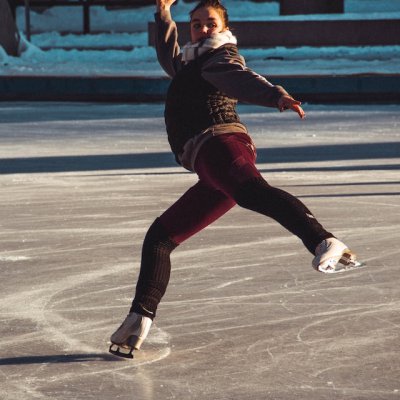participio pasado
- Ejemplos
En esta página encontrarás únicamente el participio pasado pasivo. | On this page you find just the passive past participle. |
En la conjugación, el participio pasado es siempre invariable. | The form of the past participle is always invariable. |
Tanto el participio presente como el participio pasado pueden ser usados como adjetivos. | Both the present participle and the past participle can be used as adjectives. |
En inglés hay principalmente dos tipos de participios: el participio presente y el participio pasado. | In English there are mainly two kinds of participles: the present participle and the past participle. |
Si no se sabe quién es el agente, se debe usar el participio pasado pasivo. | If you don't know who the agent is, you have to use the passive past participle. |
Los verbos irregulares se caracterizan porque no terminan en-ed al formar el pasado simple y el participio pasado. | Irregular verbs do not end in-ed when forming the past simple and the past participle. |
El pretérito perfecto se construye con el presente del verbo auxiliar haber y el participio pasado. | The present perfect is constructed with the present of the auxiliary verb haber and the past participle. |
En resumen, solo hay dos formas verbales que realmente importan aquí: el pasado simple y el participio pasado. | In short, there are only two verb forms that really matter here–the past simple and past participle. |
En el inglés hay principalmente dos tipos de participios: el participio presente y el participio pasado. | In the English language, there are mainly two types of participles: the present participle and the past participle. |
Mi favorito de estas es "smitten", que es el participio pasado de la palabra "smite", golpear. | My favorite one of these is "smitten," which is the past participle of the word "smite." |
El uso de ser o estar con el participio pasado en español (Soy aburrido es muy diferente a Estoy aburrido). | The use of ser or estar with the past participle in Spanish (Soy aburrido is very different from Estoy aburrido). |
El factor importante en crear una oración pasiva es la tercera forma del verbo (también llamado V3 o el participio pasado). | The important factor in creating the passive sentence is the third form of the verb (also called V3, or past participle). |
Cuando ya conoces el participio pasado correcto, usas el verbo BE en la forma correcta para crear una oración pasiva. | Once you know the correct past participle, then the verb BE in the correct form is used to make the passive. |
Y, aunque el sánscrito postvédico o clásico sí incluye al Imperfecto, al Aoristo y al Perfecto, hay una tendencia general a usar el participio pasado. | And, although postvedic or classic Sanskrit does include Imperfect, Aorist and Perfect, there is a general tendency to use the past participle. |
En esta sesión, repasaremos el pasado compuesto a través de un recordatorio de la forma, el uso, el participio pasado, etc. y practica ejercicios. | In this lesson, we will revise compound past tense, its form, the usage, the past participle, etc., along with exercises. |
El epíteto sativa específico proviene de satum (que es el participio pasado de sero siembra, siembra) sembrado, sembrado: sembrado o plantado, cultivado, doméstico. | The specific sativa epithet comes from satum (which is the past participle of sero sowing, planting) sown, planted: which is sown or planted, cultivated, domestic. |
La tabla tiene tres columnas: la primera columna es el infinitivo (la forma original del verbo), la segunda es el pasado simple y la tercera es el participio pasado. | There are three columns in the table: the first column is the infinitive (the original form of the verb), the second is the past tense, and the third is the past participle. |
Los correlativos tienen su origen en un desplegamiento de la forma nominal de los verbos transitivos: el participio presente como forma activa, el participio pasado como pasiva y el infinitivo como nexo entre los dos. | The correlatives had their origins in an unfolding of the nominal forms of transitive verbs: the present participle as an active form, the past participle as the passive and the infinitive as the nexus between the two. |
Usa el verbo "have" y el participio pasado del verbo para formar el pretérito perfecto. | Use the verb "have" and a past participle to form the present perfect tense. |
La maestra preguntó a la clase si alguien recordaba el participio pasado del verbo "to ring". | The teacher asked the class if anyone remembered the past participle of the verb "to ring. " |















